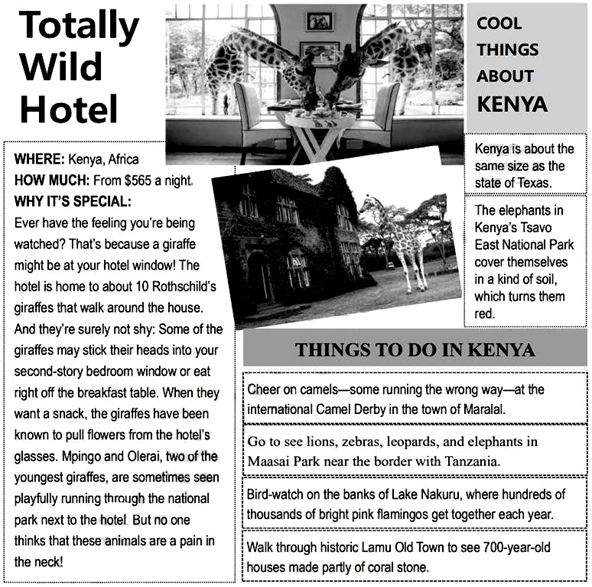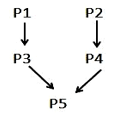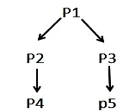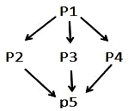A zero-waste life is a lifestyle that hardly creates any rubbish. So, a zero-waste theme store is about 1 people with a number of everyday, practical and pleasant zero-waste products to help them start on a one-stop, zero-waste life journey.
"Zero-waste" or" danshari" was first 2by a French woman Bea Johnson. "Live a life and try not to create any rubbish; use different methods to protect the earth," she said.
Yu Yuan, 27, is 3attracted by this idea.
She and her boyfriend have lived in Beijing for many years. And earlier she used to be a customer without thinking a lot 4she saw a video about "zero-waste".
The 5 is about a family of four, and the rubbish they produce every year is placed in a jar.
After Watching the video, Yu wanted to 6this zero-waste lifestyle with her boyfriend.
Yu says that a zero-waste life 7the 6R principle—Refuse, Reduce, Reuse, Repair, Recycle and Rot (腐烂).
Over August-October when Yu followed the principle of zero-waste 6R, she and her boyfriend
Joe Harvey both 8only two cans of rubbish.
Now, the couple have opened a small 9 called The Bulk House in Nanluoguxiang, Beijing, to support a zero-waste life.
At the store they use environmentally friendly products. For example, they use wood products to replace 10ones and prepare cloth bags printed with zero-waste logos for customers. Most of the products sold in the store can be reused, and a small number of 11which are not recyclable can degrade(分解). The store 12has secondhand books and audio-visual
CD/DVDs.
For used toiletries (things like soap and toothpaste that are used for cleaning yourself) there is a company which accepts them, and the couple regularly mail their waste to it.
Yu says that those who were once not 13 in the zero-waste lifestyle have gradually changed because of curiosity. "The zero-waste lifestyle", she adds, "is for everyone."
"It's 14us at our fingertips". Yu expects some of her friends to 15 her on the road to zero-waste. As the saying goes, "many hands make light work".

It was Day 1 of our vacation on Cortes, a beautiful quiet island. "iPhone, iPhone, iPhone," my son kept moaning(呻吟). In front of him was a big window of facing the blue ocean. And a cool gentle wind was coming in from the door. Clearly, he saw and felt none of it.
Back at home, I'd soon give up and hand the phone over to him after five minutes of listening to this kind of moaning.
But not here. Before we left, I had told my 10-year-old son the rule no e-mails, no Facebook, no video games, and no iPhone. We came here to get away from them all. Here we were on our first day and already, he couldn't stand it.
▲ I walked down the grass road to the beach and looked out to the sea. My 6-year-old daughter and my husband were drawing on pieces of wood. They were doing just fine.
On Day 2, we spent the whole morning digging for shells(贝壳). This time, my son joined us.
He collected shellfish and other sea treasures. When we got back to our little wood house. I gave my son a book, and put him on the lovely garden chair. It was almost dinner when he looked up.
The next few days passed in peace.
On Day 6, my son was lying beside me on the beach, watching the sun going down. He was playing with the sand. And there was something shining in his eyes. I realized how time slowed down for both of us. It was exactly what I wanted. Finally, we were able to sit quietly without thinking about screens, phone calls and e-mails.
A week away from all the electronics and life is good.
Although people everywhere seem to enjoy drinking coffee, they don't all have the same coffee culture. In Europe for example, coffee shops are common places for people to meet friends and to talk while they drink coffee. On the other hand, places like this were not as common in North America in the past. Instead, people in North America liked to drink coffee in their homes with friends. The coffee culture in the USA changed when Starbucks coffee shops spread across the country.
The first Starbucks coffee shop opened in 1971 in downtown Seattle, Washington, in the USA. It was a small coffee shop that cooked its own coffee beans. The coffee shop's business did well, and by 1981there were three Starbucks stores in Seattle.
Things really began to change for the company in 1981. That year, Howard Schultz met the three men who ran Starbucks. Schultz worked in New York for a company that made kitchen equipment. He noticed that Starbucks ordered a large number of special coffee makers, which caused his great interest. Schultz went to Seattle to see what Starbucks did. In 1982, the original Starbucks owners hired Schultz as the company's head of marketing.
In 1983, Schultz traveled to Italy. The special environment of the espresso bars there caught his eyes. Back in the USA, Schultz created an environment for Starbucks coffee shops that was comfortable and casual, and customers everywhere seemed to like it. Starbucks began opening more stores across the USA. Then the company opened coffee shops in other countries as well. Today, there are more than 16,000 Starbucks coffee shops all over the world.
However, that does not mean Starbucks has not had problems. In fact, many Starbucks stores have closed over the past few years. On the one hand, this is because there were too many coffee shops competing for business in one small area. On the other hand, stores in some countries closed because the coffee culture there did not match with the" feel the same everywhere" environment offered by Starbucks.
a. This man helped to make Starbucks a huge coffee company.
b. Starbucks began as a small coffee company in Seattle in the USA.
c. He went to Seattle to learn about the company and later worked for it.
d. Howard Schultz noticed Starbucks ordered lots of special coffee makers.
 B .
B .  C .
C .  D .
D . 
Many of us may have experienced the pleasant surprise of seeing recommended(推荐的)songs after you listen to certain songs on a music app. When we open shopping websites, we are more likely to see things on the home page that we might want to buy.
This is based on data(数据). Data is no longer only about numbers, but information from almost every part of our lives: our location, shopping habits and interests. All of this is called "big data". The sources for big data generally fall into one of three categories: Streaming data, Social media data and publicly available sources.
President Xi Jinping called for China to speed up its big data strategy in order to better serve social and economic development and improve people's lives, the Xinhua News Agency reported. He also asked for greater use of big data in areas like education, social safety and transportation.
In the past few years we have seen big data being used more often in China. The role it plays in tourism is just one example. The data travelers share online is offering the tourism industry a lot of information about the country's scenic areas. After the data is analyzed(分析), different scenic areas can create their own online information for other travelers to see. The information not only tells travelers' reviews, but also tells the scenic areas where services need to be improved.
Big data is also an important growth engine(增长引擎)for economic development. With an annual growth rate of 30 percent, sales of big data services and products in China will reach 1 trillion yuan yearly by 2020, China News Service reported.
Activity
Hold arms straight out to the sides
Move your arms in circles.
Come back to the starting position and move your arms in the other direction.
Activity
Raise one foot backward, and hold it with one hand.
Breathe and slowly pull your foot to your hip(屁股).
Try to keep both knees together.
Activity
Stand with some space in front of and behind you. Move the top of your body downward.
Keep your back straight and reach for your feet with both hands.
Hold this for about half a minute.
Activity
Take one step forward with your right foot.
Put your hands on the right knee and press(压).
Do the action in the same way with your left foot.
Activity
Stand with feet shoulder-width apart(两脚与肩同宽).
Raise both arms overhead.
Hold for about half a minute and relax.
A.  B.
B.  C.
C. 
D.  E.
E. 
—Not yet. I wonder whether it is worth so much money.
|
warm politely introduction discuss mention |
Anna was a 9-year-old girl from a small village. It was the (one) day of her school in town. seeing her simple clothing and knowing her identity(身份), other students laughed at Ann. Then the teacher told everyone (write) down the 8 wonders of the world. Everyone except Anna handed in (they) answer papers. The teacher came to her, "Don't worry. Just write you have known. "Anna replied, "There are so many (thing) Which 8 wonders can I pick to write?"
Most students answered (correct): the Great Green Wall of China, the Great Pyramid of Giza, the Leaning Tower of Pisa… Finally the teacher(start) reading Anna's answer, "The 8 wonders: To be able to see, To be able to Hear, To Feel, Laugh, Think, Be Kind, Love and Learn! "The whole class kept (silence).
The girl from a small village reminded them the precious gifts in their life, which were true wonders.

注意:
1)文章需包含海报的所有要点,并适当拓展;
2)文中不得出现真实的人名校名;
3)词数:80-100,倡议书格式已给出,不计入总词数。
参考词汇:wear masks(口罩), Covid-19(新冠肺炎), impact(冲击), virus(病毒)
Dear teachers and schoolmates,
Over the past thirty days, Covid-19 has made its way around China. It has a strong impact on our life and study.
Li Hua
March 9th, 2020